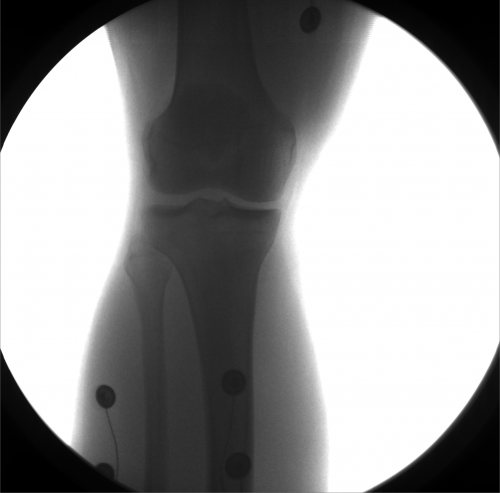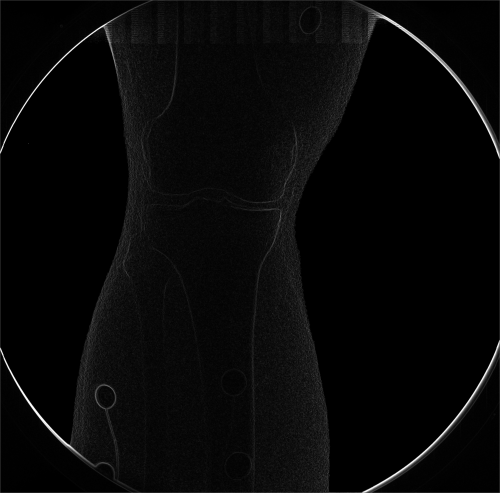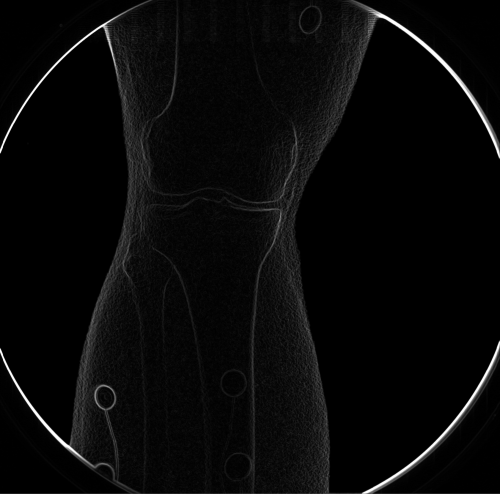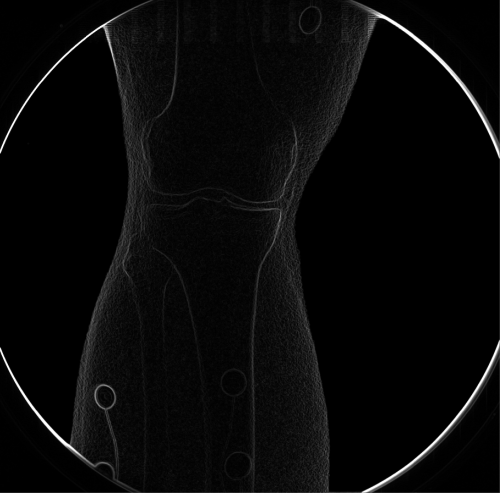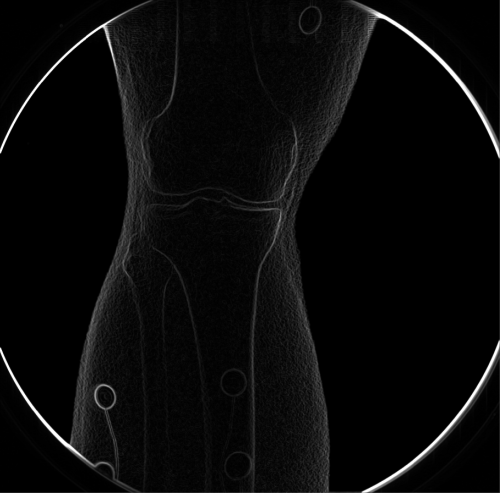CalibrateDSX: The Importance of Image Smoothing and Downsampling: Difference between revisions
Jump to navigation
Jump to search
mNo edit summary |
mNo edit summary |
||
| Line 1: | Line 1: | ||
DRR-based tracking of bones in X-ray images relies heavily on the brightness of the bones' edges in the edge-detected images. Smoothing and/or resizing the images during correction increases their signal-to-noise ratio, resulting in brighter edges. Some amount of smoothing or resizing is almost always needed to maximize the trackability of the bones. | DRR-based tracking of bones in X-ray images relies heavily on the brightness of the bones' edges in the edge-detected images. Smoothing and/or resizing the images during correction increases their signal-to-noise ratio, resulting in brighter edges. Some amount of smoothing or resizing is almost always needed to maximize the trackability of the bones. | ||
'''Example: Knee''' | |||
These images were captured at the Biodynamics Lab at the University of Pittsburgh. They are 14-bit grayscale with a resolution of 1824x1800 pixels. | |||
Original and edge-detected: | Original and edge-detected: | ||
[[File:CalDSX_KneeOriginal.png|500px]] | [[File:CalDSX_KneeOriginal.png|500px]] | ||
[[File:CalDSX_KneeEdges.png|500px]] | [[File:CalDSX_KneeEdges.png|500px]] | ||
Smoothed (left), resized(right): | Smoothed (left), resized(right): | ||
[[File:CalDSX_KneeSmoothed.png|500px]] | [[File:CalDSX_KneeSmoothed.png|500px]] | ||
[[File:CalDSX_KneeResized.png|500px]] | [[File:CalDSX_KneeResized.png|500px]] | ||
Smoothed and resized: | Smoothed and resized: | ||
[[File:CalDSX_KneeSmoothedResized.png|500px]] | [[File:CalDSX_KneeSmoothedResized.png|500px]] | ||
Revision as of 17:36, 19 January 2021
DRR-based tracking of bones in X-ray images relies heavily on the brightness of the bones' edges in the edge-detected images. Smoothing and/or resizing the images during correction increases their signal-to-noise ratio, resulting in brighter edges. Some amount of smoothing or resizing is almost always needed to maximize the trackability of the bones.
Example: Knee
These images were captured at the Biodynamics Lab at the University of Pittsburgh. They are 14-bit grayscale with a resolution of 1824x1800 pixels.
Original and edge-detected:
Smoothed (left), resized(right):
Smoothed and resized:
